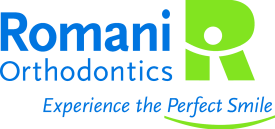
Dr. Romani understands that a better diagnosis means a better treatment plan for her patients. More accurate and highly defined information of the teeth, jaws, and facial complex allows her to develop the most efficient and effective treatment plan customized for each patient and carried through to successful case completion.
This advanced 3D technology allows Dr. Romani to select the appropriate scan for each patient at the lowest acceptable radiation dose. The award-winning i-CAT FLX® has an i-Collimator® that electronically adjusts the field-of-view to limit radiation only to the area of scanning interest so that our clear 3D images can be customized for each patient, depending on the amount of information required at each stage of treatment.
Romani Orthodontics knows the ability to have maximum control over the dose of radiation delivered to our patients is of critical importance to patients of all ages, as well as clinically responsible care.
* i-CAT® is the 3D system selected and installed in more than half of the leading dental schools and universities in the United States.
** Ludlow JB, Walker C. Assessment of phantom dosimetry and image quality of i-CAT FLX® cone-beam computed tomography. Am J Orthod Dentofacial Orthop. 2013;144(6):802-817.
**Quintero J Jan/Feb issue of Orthodontic Practice US


